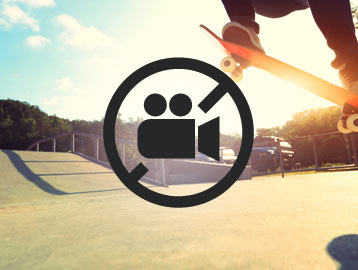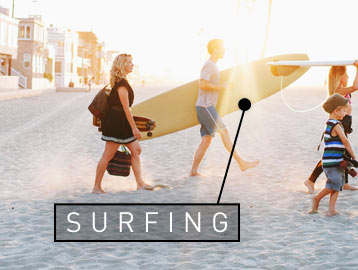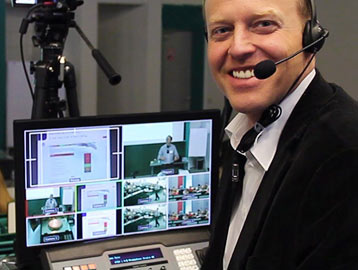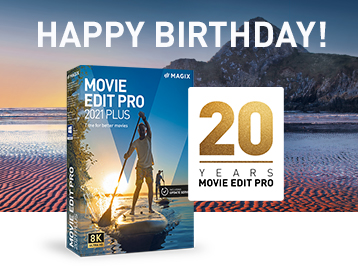July 11, 2018
Artist Interview: Pawel Piatek

Pawel Piatek is a UK based Fine Art Photographer, whose art crosses genre lines and experiments with the limits of DSLR photography and videography, and can possibly best described as experimental visuals. In addition to his primary work with authors, publishing houses, and independent musicians, Piatek’s fine art has been published in over 20 countries to date, Piatek is working as a Producer on the indie drama “Dead Bodies” and developing a concept in pre-production for his first feature thriller.
Can you tell us about what attracted you to the visual arts and how you got your start as an artist?
I have always been interested in art, especially in Italian Renaissance paintings, Surrealism and film. I started taking photographs with 35mm SLR cameras and at the same time I began experimenting with film camcorders shooting various short videos. Later, with the arrival of DSLR I completely focused on photography instead as it was something new and exciting back then. Eventually, I went back to video again when affordable DSLR cameras were much more accessible and capable of shooting decent videos. From that moment, I was really hooked and started to learn video properly, watching lots of music videos and taking my first steps in digital editing as well.
We became aware of you because of the video compositions you make, but you also work as a photographer. Do you identify more with one medium than the other?
Until recently, the division between photography and video was more or less 80/20. Now, however my main focus is video. I probably won’t stop photography altogether, but I would like to keep down my involvement and to put some more space between me and photography for now. So, in that way I can mainly focus on personal work and participating only in some really exciting photo projects where the main goals are publications in print, either as editorial, or a book, music album cover, etc. In effect, it gives me more time to work on my few video projects that are currently at different development stages right now.
How would you describe your art to someone who is about to view it for the first time, so that they could get the most from the first viewing?
Dreamy, edgy, and often surreal with constant usage of handheld cameras to create aesthetic of realism. Then comes kinetic, choppy editing mainly with high saturated colours and natural light. Complex, overlapping storyline and a mainly non-linear structure. Setting – most likely in run down locations, abandoned and urban decay, ideally accompanied with dark soundtracks, or weird noise.
Do you consider your videos films, or video installations? How do you refer to them?
I would say video films. Video installations I rather identify with linear stories where viewer plays more active role by evolving in the space and becoming part of the plot as character in a film.
Anyone who views your art will notice some thematic elements, which seem to be important to you – primarily, fashion and physical form, and the relationship between the subject, their environment and solitude. What made you choose these themes? What feelings do you want your audience to experience?
I have always loved watching fashion films and music videos and that is where most of my inspiration comes from. I prefer working with real people set in current times and in real environments. I’m not a big fan of green screen and complicated digital effects, etc. Ideally, the audience would have an enigmatic experience watching my videos to be absorbed and with a puzzled story that has to be re-considered while we are watching, and then, perhaps for good while afterwards. Well, it may not be working as well just yet, but this is where I eventually want to go with my videos. Also, at the moment, I prefer to work with minimal cast and sporadic spoken parts as I believe it adds more control over the whole projects and adds mystery to the story.
You use stylistic elements to help convey these themes. You often play with playback speed and direction, use color grading or filter, and manipulate audio. Can you give us some insight into how you do this and what effect you are trying to achieve?
I love suspense in videos. I try to hook the audience to watch the whole piece right to the end where the end often is just an anti-climax really or not clear at all with no real resolution, whatsoever. I believe such endings and not so standard storylines make you watch the videos again and again trying to figure out if you just didn’t miss something along the way. That’s especially pretty common with fashion films nowadays.
In all, your films are extremely intimate – almost like soul-searching. I want to say that there is something almost religious in these videos. Would I be wrong in having that assumption? Is there a story you are telling?
I’m still discovering myself balancing somewhere between strange and unknown places, that are not necessarily gloomy or depressing, but rather waiting to be discovered and explored more with some religious subtext to them somewhere under the surface. There is always some kind of connection in my videos to faith and mystery mixed together, but I’m still evolving trying different things to shape up my style I guess…
Can you tell us about technical elements and software effects you used to achieve this feel during filming and post-production?
Shooting mostly with Nikon DSLR. Then, editing on both Mac and PC, but that depends on various things. As for the effects, I often use different cuts, strange and irregular colouring and playing with video speed until I achieve the desired results.
What is your technical set up? Which software are you using?
The first cut and general selection of the right footage for the main editing is done on Mac with iMovie, then the selected footage is transferred to PC for further work with MAGIX. The transfer could be tricky at times, but you learn from your mistakes. On rare occasions, I use DaVinci for colouring, but that’s depends. In general, the main work is done with MAGIX.
You started with MAGIX Movie Studio and switched recently to Video Pro X. Can you tell us about what attracted you to Movie Studio? Were there any particular features or functions, which you regularly used?
There are many features that I like. I was attracted to Movie Studio, because through some research in the past I found out that this was the best software for my needs when working on PC, and I use PC much more than Mac for video editing. I use a lot frame by frame editing, which could be time consuming, but for me this is one of the main feature when I checked out the new software – especially how close the software comes to have frame by frame editing option. I’ve tried several other programs over the years, but clearly MAGIX is my favourite for it.
Now that you’re using Video Pro X, have you noticed more freedom to accomplish your artistic aspirations? What are some of the features that you like using and rely on to make your art?
New Colour Grading and Colour Correction features including NewBlue Looks saves you a lot of time and makes everything a bit easier and faster also giving you more options to play with and experiment with different looks, etc. Also Exposure Features are similar to Photoshop, which I know really well plus Multicam Editing are my favourites. Then again, the ability to frame by frame precise cuts is just my thing really.
Which is project you’ve worked on is the one you are most proud of and why? Did you learn anything about yourself as an artist from it?
It has to be “Dark Empty” (vimeo.com/pawelpiatek), which is one of my favourite videos where I used many different editing options and techniques as I was learning and discovering new things. You can see similar effects I did, especially at the beginning in “My Familiar” (https://www.youtube.com/watch?v=FCuetkPZK5A), but I really enjoyed “Dark Empty” as it was my learning ground that I can use now in my future videos. With “Dark Empty”, I also went through several soundtracks before I came across the current one that I think works really well. So if you are patient and focused on what you want to achieve, then the final effect can be just as great and rewarding. But of course, you will need to spend some good time researching for the right soundtrack. This is particular helpful with fashion films.
What challenges do you try to confront as an artist, which you feel are important to your work?
I have done few commercial projects in the past, but those kind of videos or photos do not make it to my website or Vimeo channel, as simply there is not much artistic values in them that I would like to show and not much of my artistic style in them. So, now I only try to get involved in commercial projects where my style would be present in them.
Do you also use your artistic abilities for private and commercial work? How do you have to change your role and perspective as an artist to do this work? Has your personal art also benefited from these jobs?
With commercial clients, it is quite difficult to convince some clients to accept your particular style, editing or your vision. I find that difficult with both photography and video. Therefore, you really have to be consistent and true to yourself or just don’t go for it at all. Then again, fashion films, most of music videos, and fine art photography are relatively easy to transfer your vision to, so I just mostly try to select such commissions. Some time ago, I would just jump into any project that would come along, but as my skills and knowledge have developed, I’ve become very selective. Of course, we have to pay the bills with our work, but everything is personal choice in the end. This topic is vast and complicated and you could go on forever talking about it.
What projects do you have coming up?
My friend, Jarek of Meinhof Films, and I have almost finished shooting our first low budget indie feature film, “Dead Bodies”, on which I am a Producer and also help with editing, especially the colour grading. You can see our latest short project “Into the Void” on Vimeo. I am also developing a concept for my first feature, so far working title is “I Die” and we are hoping to go in pre-production by the end of this year or early 2018. I do not want to get involved in many videos this year though, or maybe just one or two. Shooting promo for “I Die” is my priority now and it takes a lot of time and commitment. But, of course, I never say no to an interesting fashion film or music video concept that could pop out at any time.
Where should people go to find more information and find out about upcoming showings of your work?
- I have few accounts on social media, but just check some links on my personal website for the main links at
- My main twitter account (@Pawel_Piatek) is updated on the regular basis with lots of short experimental videos and photography.
- Then, my Vimeo channel includes only portfolio worthy projects.
- Piatek previously used MAGIX Movie Edit Pro Plus and currently is using MAGIX Video Pro X for his video work. We would like to thank him for taking the time to talk with us about his art.
- If you would like to try Video Pro X for your own video projects, you can download a 30-day free trial here.
Next Post >
Movie Edit Pro celebrates its birthday!
< Previous Post
Object tracking in Movie Edit Pro
Related Posts
Legal issues when filming: Shooting permits, copyright & more
Shooting permits and copyright – everything you need to know about legal issues on set you can read in this article.
Object tracking in Movie Studio
This article shows you how to distort image content and create title animations using object tracking in Movie Studio.
The man behind the multicam: Eckhard Stoll
Movie Studio is a complete video editing solution that combines professional features with intuitive operation.
Movie Studio celebrates its 20th birthday!
Happy Birthday, Movie Studio! We're celebrating 20 years of first class effects, user friendly workflows, and creative approaches.



